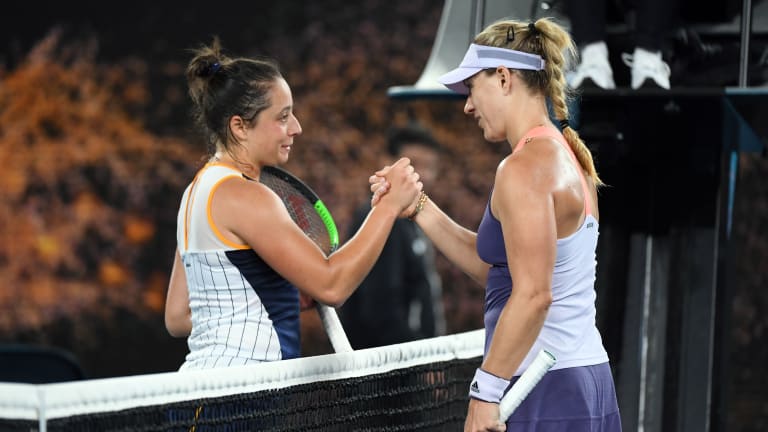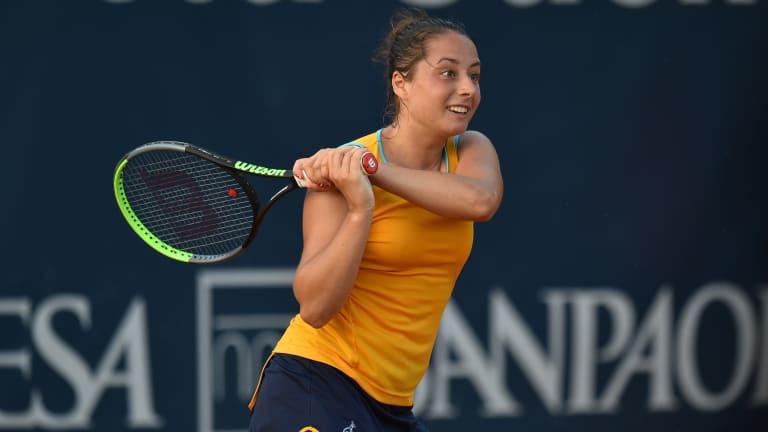Scholarly by nature, law student Cocciaretto learning to "do my job"
By Aug 06, 2020Social
WATCH: Elisabetta Cocciaretto charms crowd with a little French after Roland Garros breakthrough
By May 31, 2024WTA Charleston, USA
“Effort is non-negotiable”: Victoria Azarenka shares spotlight with son Leo in his TC desk debut
By Apr 04, 2024Miami, USA
Naomi Osaka, playing “the most free” since returning to tour, charges into Miami second round
By Mar 21, 2024Facts & Stats
Ranking Reaction: Iga Swiatek kicks off milestone 70th consecutive week at No. 1
By Jul 31, 2023WTA Hobart, Australia
In Hobart, qualifier Lauren Davis wins second WTA title six years after her first triumph
By Jan 14, 2023Ferro beats Kontaveit to win first title of tennis' return In Palermo
By Aug 09, 2020Match of the Day: Anett Kontaveit vs. Elisabetta Cocciaretto, Palermo
By Aug 06, 2020Top 5 Photos 8/6: Kontaveit down but not out in Palermo
By Aug 06, 2020ATP Paris, France
Ugo Humbert claims Carlos Alcaraz upset at Paris Masters
By Oct 31, 2024Scholarly by nature, law student Cocciaretto learning to "do my job"
Now 19, Elisabetta Cocciaretto posted her first Top 25 win late Wednesday evening over Donna Vekic to reach her first WTA quarterfinal in Palermo.
Published Aug 06, 2020
Advertising

Scholarly by nature, law student Cocciaretto learning to "do my job"
© AFP via Getty Images
Advertising

Scholarly by nature, law student Cocciaretto learning to "do my job"
© Getty Images
Advertising
Advertising

Scholarly by nature, law student Cocciaretto learning to "do my job"